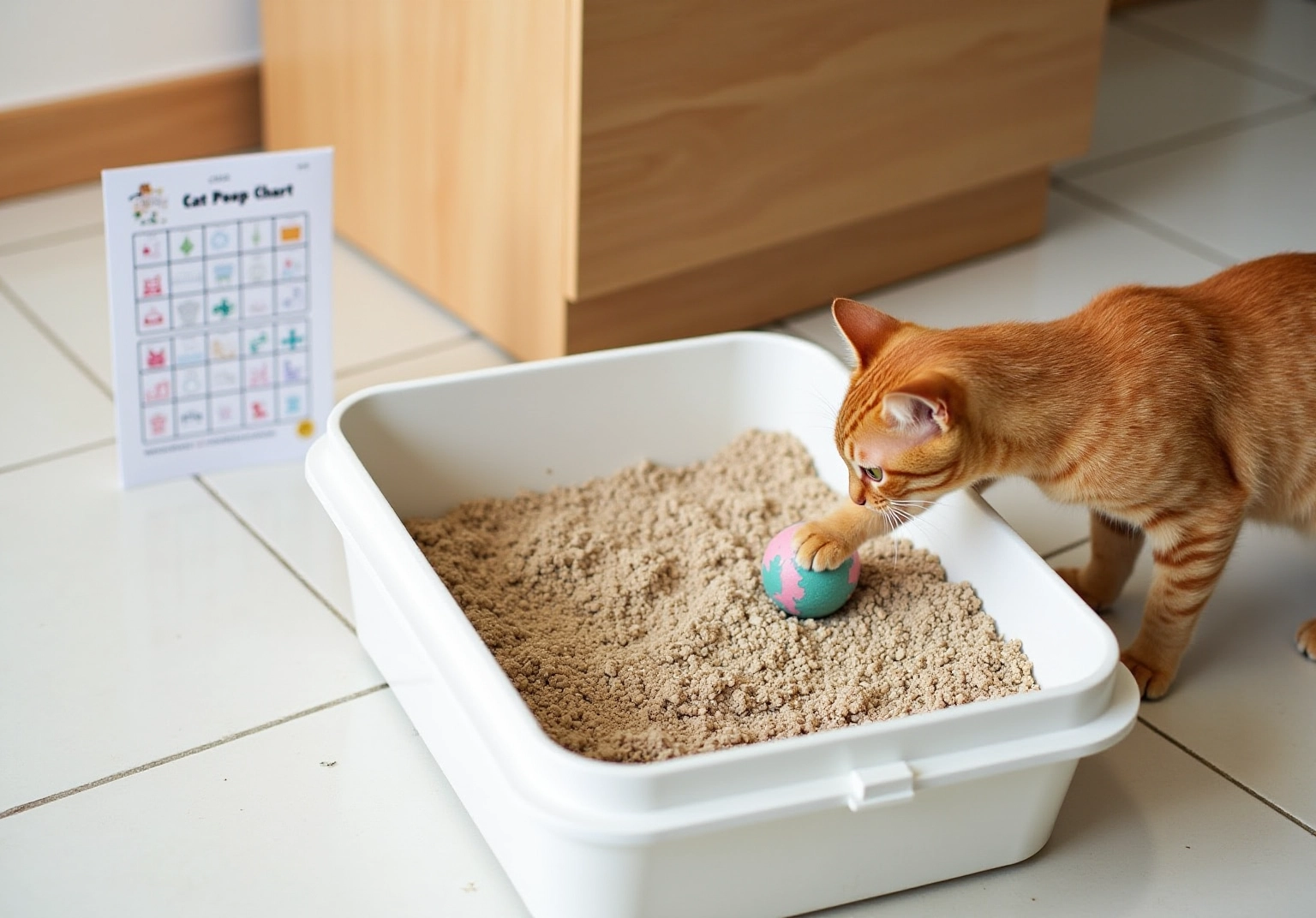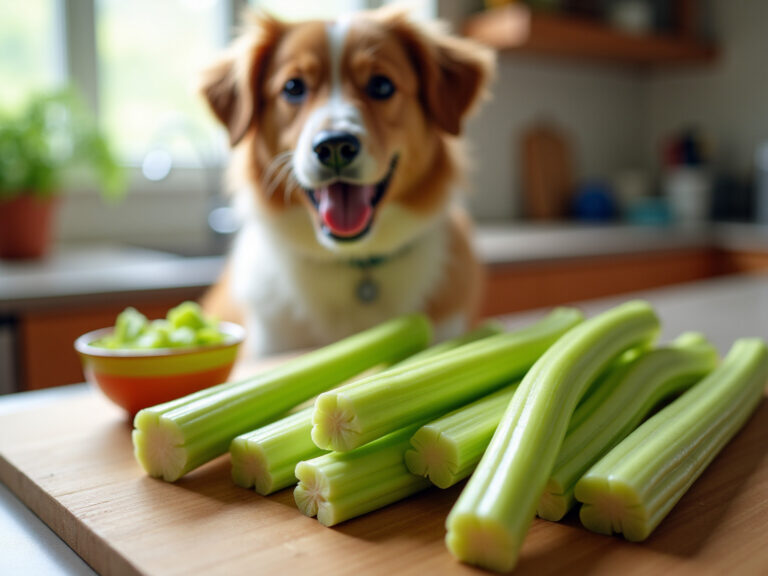Master the Cat Poop Chart for Better Pet Health
Overview
This article highlights the vital role of mastering the cat poop chart in monitoring and enhancing your furry family member’s health. By assessing the condition of a cat’s stool, you can gain insights into their well-being. Various colors and consistencies of feces can indicate underlying health issues, and regular observation can lead to timely veterinary intervention, ultimately improving your pet’s quality of life.
At Adventure Den, we understand how much you care for your pets. Imagine being able to spot potential health concerns before they escalate. This proactive approach not only fosters a nurturing environment but also strengthens the bond you share with your beloved companion.
Taking the time to observe your cat’s stool can make a significant difference. With just a few moments of your day, you can ensure that your pet remains happy and healthy. Remember, your attentive care can lead to a happier, healthier life for your furry friend. So, let’s embrace this journey together and prioritize their well-being.
Introduction
Understanding your cat’s health can often hinge on one overlooked aspect: their poop. The cat poop chart serves as a vital tool for pet owners, providing a straightforward way to assess your furry family member’s well-being by interpreting the color and consistency of their stool. By mastering this chart, you can identify potential health issues early, ensuring your cats remain healthy and happy.
But what happens when the seemingly mundane act of pooping reveals alarming signs that could indicate serious health concerns? It’s essential to stay vigilant and informed, so you can nurture your beloved companions effectively.
Understand the Importance of the Cat Poop Chart
The cat poop chart serves as an essential tool for pet owners, providing a clear visual guide to help you assess the condition of your furry family member. Typically, healthy adult cats defecate once or twice a day, and recognizing the various types of stool can help you identify potential wellness issues early, preventing them from escalating into serious problems. Regularly checking your cat’s stool provides valuable insights into their diet, hydration, and overall well-being. Healthy cat poop should be a deep brown, firm, and have a consistency similar to modeling clay.
This proactive approach not only enhances your cat’s quality of life but also deepens the bond between you and your pet, as you become more attuned to their needs. Research indicates that many pet owners utilize a cat poop chart to monitor their cat’s health, underscoring the importance of this tool in daily care routines. Veterinarians stress that consistent observation of stool characteristics can lead to timely interventions, helping to ensure your cat remains healthy and happy. As Dr. Iulia Mihai wisely notes, “Whether your pet’s feces is runny, clumpy, or oddly colored, noticing any change might save your cat’s life.
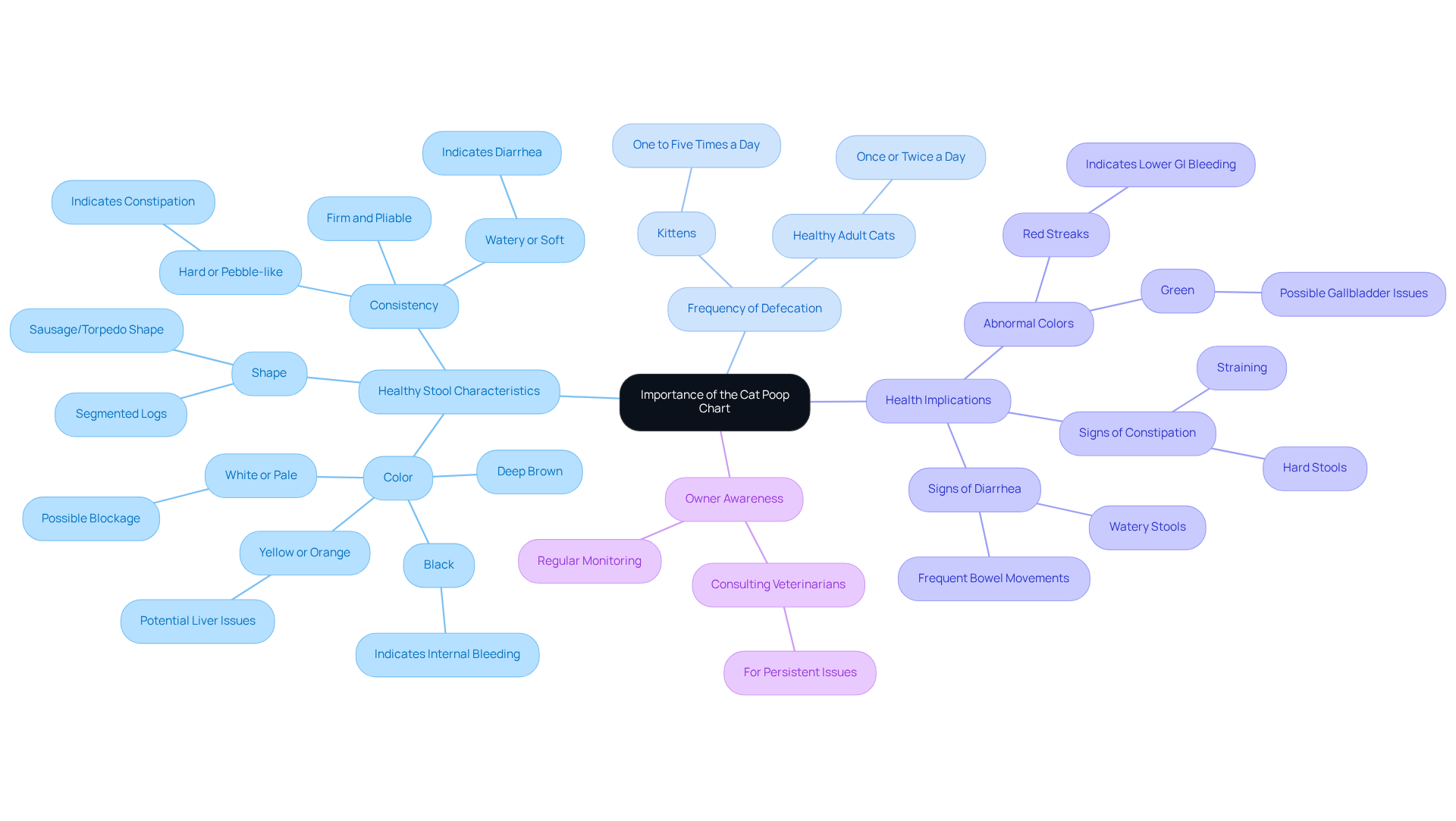
Learn to Interpret Cat Poop Colors and Consistencies
To effectively utilize the cat poop chart, it’s crucial to comprehend the various colors and consistencies of cat feces, as these can act as indicators of your furry family member’s well-being. Healthy cat poop is typically brown and firm, but deviations can signal underlying health issues.
-
Color:
- Brown: Normal, indicating a healthy digestive system.
- Green: May indicate dietary concerns or bile problems.
- Yellow: Could suggest liver issues or recent dietary changes.
- Black: Often an indication of internal bleeding or digested blood, necessitating prompt medical attention.
- Red: Fresh blood, which may indicate possible injury or illness, requires immediate veterinary evaluation.
-
Consistency:
- Firm: Healthy, well-formed stool is a sign of good digestive health.
- Soft: May indicate digestive upset or dietary intolerance.
- Watery: Indicates diarrhea, which can lead to dehydration and necessitates a consultation with a professional if it persists.
Well adult cats usually defecate once or twice daily. By consistently observing your cat’s stool with the help of a cat poop chart, you can swiftly recognize troubling changes, enabling prompt intervention and improved well-being. For instance, a case study titled “Assessing the Cat Poop Chart” illustrates how sudden dietary changes can significantly affect stool consistency and color, highlighting the importance of monitoring these variations.
Additionally, recognizing emergency signs, such as blood in the stool, can lead to prompt treatment, potentially saving your cat’s life. If blood is present, saving a stool sample for veterinary testing is crucial. By remaining watchful regarding your cat’s stool condition, you can ensure their well-being and address any concerns before they worsen. Remember, caring for your pet involves being attentive to even the smallest details, and your proactive approach can make all the difference.
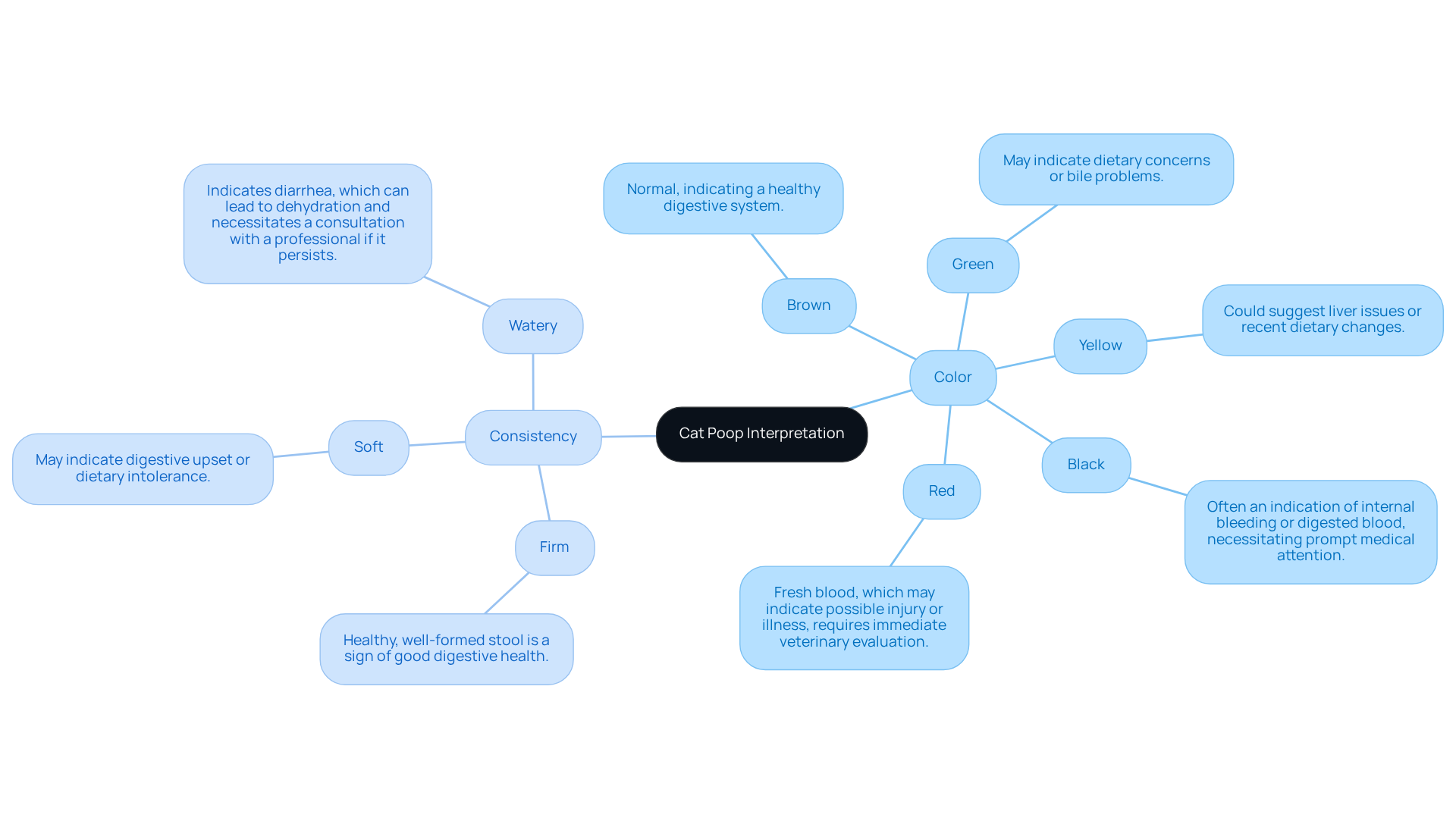
Monitor Your Cat’s Litter Box Habits Regularly
Establishing a routine for checking your cat’s litter box at least once a day is crucial for their well-being. It’s important to pay close attention to several key aspects:
- Frequency: How often does your cat use the litter box? A change in frequency can signal potential medical issues, such as urinary tract infections or other health concerns. If you notice fewer urine clumps during scooping, this may indicate that your cat is urinating outside the litter box, which warrants further investigation.
- Amount: Is there a noticeable increase or decrease in the amount of feces? The cat poop chart can help identify changes in stool volume, frequency, appearance, and odor, suggesting dietary adjustments or possible medical issues that may require veterinary attention.
- Behavior: Observe your cat’s behavior during litter box use. Signs of straining or discomfort can point to underlying urinary or gastrointestinal problems that need to be addressed. As Pam Johnson-Bennett wisely notes, “What occurs or doesn’t occur in the litter box can be a red flag signaling a possible medical concern.”
Keeping a detailed log of these observations can help you track changes over time, making it easier to discuss any concerns with your veterinarian. Consistent observation is essential, as it enables the early identification of issues, ultimately enhancing your cat’s quality of life. Remember, regular scooping of the litter box is vital for maintaining cleanliness and monitoring your cat’s health, especially since 69 percent of American pet parents are ‘nose blind’ to pet odors. By nurturing a clean and attentive environment for your furry family members, you can ensure their happiness and health.
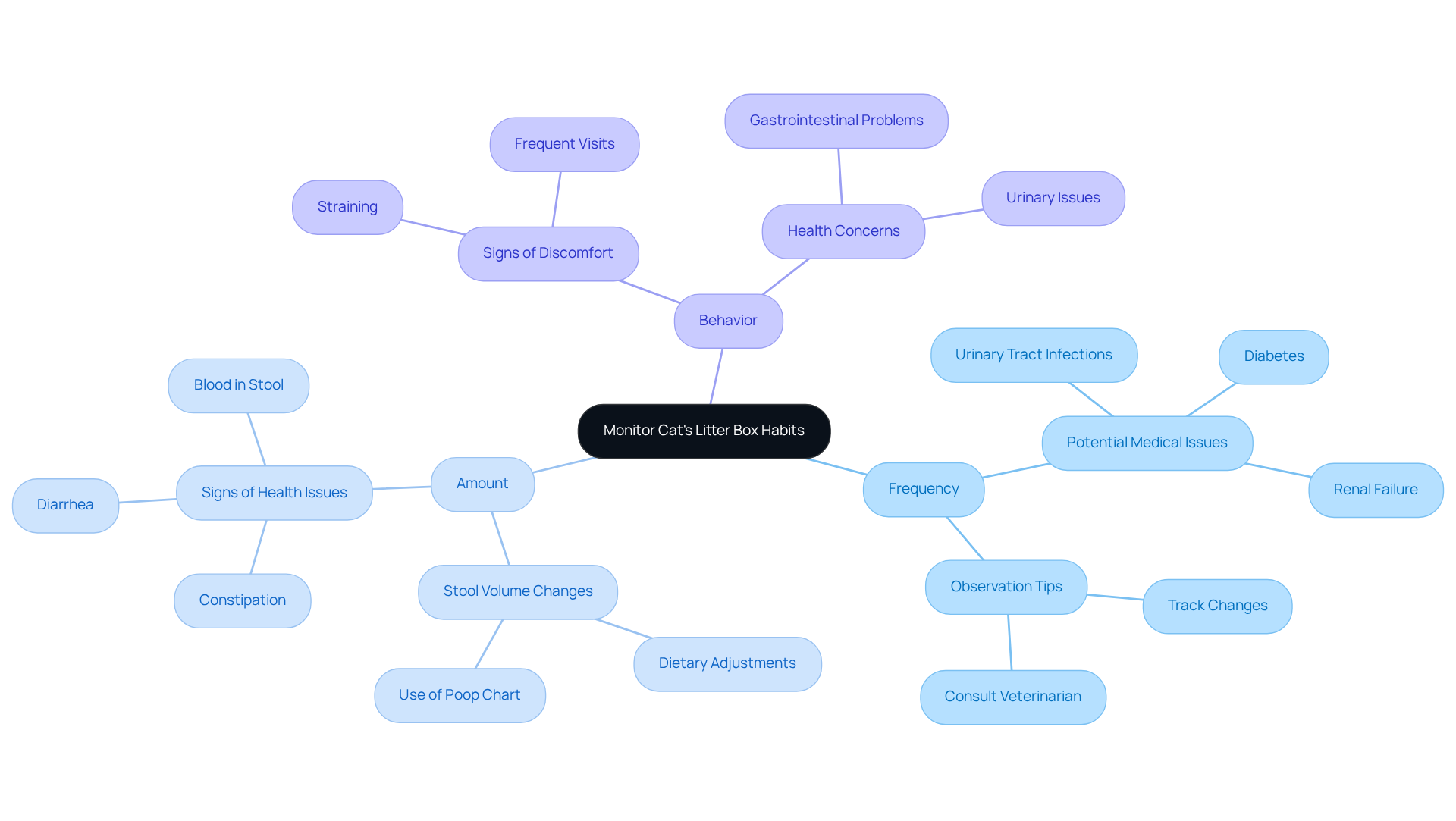
Recognize Signs That Require Veterinary Attention
Be vigilant for signs that may suggest your furry family member needs medical attention. Key indicators to watch for include:
- Persistent diarrhea or constipation: If your cat experiences diarrhea lasting more than 24 hours, it can lead to dehydration, a serious condition that necessitates prompt veterinary care. Remember, diarrhea lasting longer than a day or two can be dangerous for your beloved pet.
- Blood in stool: The presence of blood is a significant concern and should be addressed immediately, as it may indicate underlying medical issues such as colitis or intestinal parasites. Your cat’s health is paramount.
- Changes in appetite or weight: Sudden weight fluctuations, whether loss or gain, can indicate serious medical issues that require a professional assessment. Keeping an eye on their eating habits is crucial.
- Lethargy or behavioral changes: A noticeable decrease in activity or changes in behavior can be a sign of illness. If your cat seems unwell or less engaged, it may be time to consult a veterinarian to ensure their well-being.
- Gum color evaluation: Examine your cat’s gums; blue-ish purple, very pale pink, or white gums signify the need for urgent animal care. This simple check can reveal a lot about their health.
- Hydration assessment: Assess hydration by gently lifting the skin on the back of your cat’s neck; if it takes a long time to return, your cat may be dehydrated and require immediate care.
Recognizing these signs early can facilitate timely intervention, ensuring your furry family member receives the necessary care to maintain their health and happiness. As a compassionate veterinary care provider noted, “When you seek treatment for your pet early, you will save yourself costly medical bills, and you may even save their life.
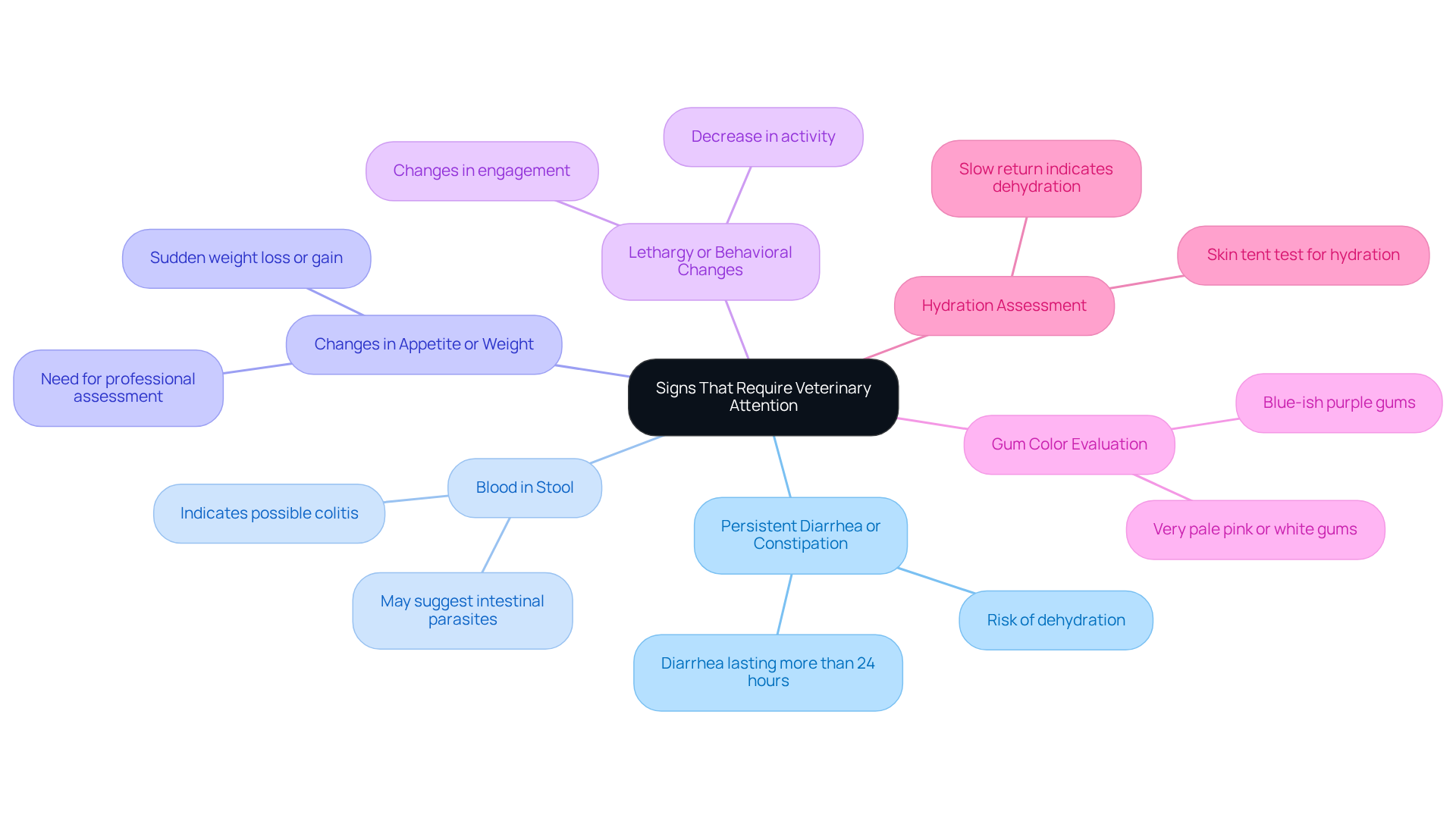
Conclusion
Understanding your cat’s health goes beyond regular vet visits; it involves a compassionate observation of their litter box habits. The cat poop chart serves as an invaluable tool for pet owners, allowing you to gauge your feline companion’s health through the color and consistency of their stool. By familiarizing yourself with this chart, you can proactively address potential health issues, ensuring your furry family members lead healthier and happier lives.
Key insights from this guide emphasize the importance of monitoring stool characteristics, such as color variations and consistency, which may indicate various health concerns. Regularly checking litter box habits—including frequency and behavior—is essential for early detection of symptoms that may require veterinary attention. Recognizing warning signs—like persistent diarrhea or blood in the stool—can facilitate timely interventions, ultimately safeguarding the well-being of your beloved pets.
Incorporating the cat poop chart into your daily routine not only enhances your pet’s health but also strengthens the bond between you and your cat. By remaining vigilant and attentive to these crucial details, you can make informed decisions that contribute to your cat’s overall health. Take action today by monitoring and understanding your cat’s stool; it can lead to a lifetime of better health and happiness for your furry friend.
Frequently Asked Questions
What is the purpose of the cat poop chart?
The cat poop chart serves as a visual guide for pet owners to assess the condition of their cat’s stool, helping to identify potential wellness issues early.
How often do healthy adult cats typically defecate?
Healthy adult cats typically defecate once or twice a day.
What should healthy cat poop look like?
Healthy cat poop should be deep brown, firm, and have a consistency similar to modeling clay.
Why is it important to regularly check a cat’s stool?
Regularly checking a cat’s stool provides insights into their diet, hydration, and overall well-being, allowing for early identification of health issues.
How does monitoring stool characteristics benefit pet owners and their cats?
Monitoring stool characteristics can lead to timely interventions, enhancing the cat’s quality of life and strengthening the bond between the pet and owner.
What do veterinarians say about observing a cat’s stool?
Veterinarians stress that consistent observation of stool characteristics can help ensure a cat remains healthy and happy, as changes in stool may indicate health problems.

